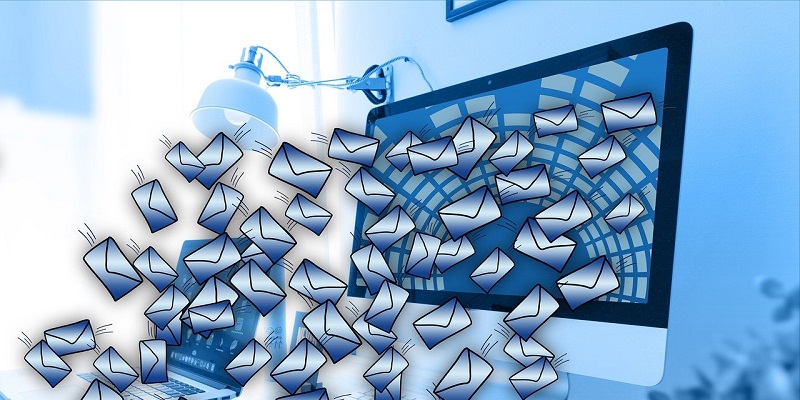In today’s digital landscape, where consumers are bombarded with advertisements and messages across various channels, email marketing has emerged as a highly effective and lucrative strategy. With its unmatched ROI, strong consumer preference, and ability to drive conversions, email marketing should be a key component of any business’s marketing arsenal.
Median ROI of 122% — the highest among marketing channels
When it comes to return on investment, email marketing reigns supreme. According to studies, the median ROI for email campaigns is an astounding 122%, surpassing other popular marketing channels like social media, search engine optimization, and content marketing. The ability to connect directly with your audience in their inbox yields unparalleled results.
In an era of information overload, consumers appreciate the convenience and control that email provides. Research reveals that a significant 73% of consumers prefer receiving communications from brands through email over other channels. By tapping into this preference, businesses can effectively engage their audience and strengthen their brand relationship.
Segmented, targeted email campaigns achieve a 20% open rate. Segmentation and personalization are key factors in successful email campaigns. By tailoring messages to specific audience segments, businesses can deliver content that resonates with recipients. This leads to higher open rates, with segmented, targeted email campaigns achieving an average of 20%. By delivering relevant and personalized content, businesses can maximize engagement and drive conversions.
Email marketing generates $42 in revenue for every $1 spent. When it comes to generating revenue, email marketing is a powerhouse. The impressive return on investment is further highlighted by the fact that every dollar spent on email marketing can result in a staggering $42 in revenue. This makes it a cost-effective and highly lucrative marketing strategy for businesses of all sizes.
Alignment with Overall Marketing Objectives and Business Goals
To drive success in email marketing, it is crucial to align your strategy with your overall marketing objectives and business goals. Your email campaigns should seamlessly integrate with other marketing efforts to create a cohesive and impactful brand message. By setting clear objectives and tailoring email content to meet these objectives, businesses can efficiently reach their desired outcomes.
Creating attention-grabbing content focused on subscribers’ needs
In an era of overflowing inboxes, cutting through the noise is essential. To capture your audience’s attention, it is crucial to craft compelling and relevant content. Urgency and specificity can help grab attention, while making promises that address subscribers’ needs can keep them engaged. By consistently delivering valuable content, businesses can establish credibility and foster long-term customer relationships.
Creating personalized and contextualized emails is paramount to successful email marketing. By utilizing merge tags, dynamic content, and segmentation, businesses can address recipients by their name and customize the content based on their preferences and past interactions. This level of personalization helps create a sense of individual attention, enhancing engagement and conversion rates. Segmenting your email list based on demographics, purchase history, or engagement levels can take personalization to the next level, ensuring each subscriber receives content that is tailored to their unique needs and interests.
Including focal calls-to-action (CTAs) to drive clicks and conversions
Every email should have a clear and enticing call-to-action (CTA) that compels subscribers to take the desired action. Whether it is making a purchase, signing up for a webinar, or downloading a free resource, the CTA should be central and visually appealing. By strategically placing CTAs and ensuring they align with the email content, businesses can drive clicks and conversions, maximizing the effectiveness of their email campaigns.
Designing aesthetically pleasing emails with fonts, white space, images, and branding
Visual appeal plays a crucial role in the success of email marketing. Emails should be aesthetically pleasing and should reflect your brand’s identity. This includes carefully selecting fonts, using appropriate white space to enhance readability, incorporating responsive images, and utilizing branded assets such as logos and colors. By creating visually appealing emails, you can enhance engagement, improve click-through rates, and strengthen brand recognition.
Maximizing Efficiency through Automation
The transformative power of email automation has revolutionized the field of email marketing, allowing businesses to streamline and optimize their efforts. Automation enables the delivery of personalized and timely messages at scale, freeing up valuable resources and minimizing manual effort. With automation, businesses can efficiently nurture leads, onboard new customers, deliver abandoned cart reminders, and send targeted offers based on specific triggers and behaviors. This leads to increased efficiency, higher conversion rates, and enhanced customer satisfaction.
Streamlining and optimizing email marketing processes
Automation not only saves time but also enables businesses to analyze and optimize their email marketing efforts. By leveraging analytics and A/B testing, companies can gather insights into what resonates with their audience, allowing them to refine their messaging and improve conversions. Additionally, automation platforms provide valuable data on open rates, click-through rates, and conversion rates, enabling businesses to make data-driven decisions and continuously improve their email marketing strategy.
As evidenced by the staggering return on investment (ROI), consumer preference, and countless success stories, email marketing is a pivotal tool in any marketer’s arsenal. By aligning your email strategy with your overall marketing objectives and business goals, delivering attention-grabbing content, incorporating personalization and segmentation, optimizing call-to-actions (CTAs), and designing aesthetically pleasing emails, you can unlock the full potential of email marketing. Additionally, embracing automation allows businesses to maximize efficiency, save time, and achieve even greater results. As technology continues to advance, investing in email marketing strategies has never been more crucial – it is the key to driving revenue, building lasting relationships with customers, and securing a competitive edge in today’s digital landscape.

